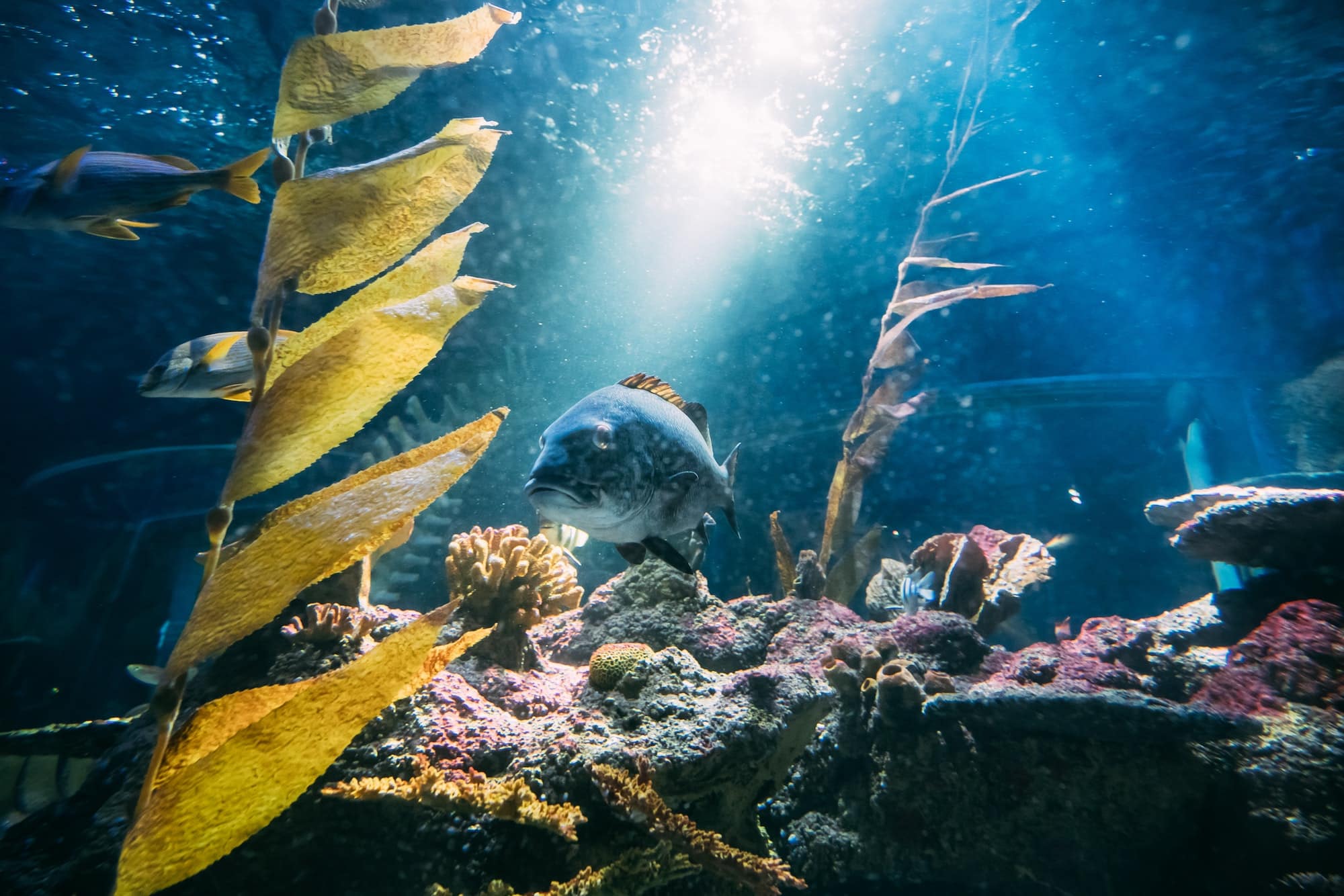Creating a natural coral reef environment within the confines of a home aquarium is a rewarding but challenging endeavor. The ultimate aim is to replicate the conditions found in the ocean to sustain a delicate ecosystem that thrives in balance. A healthy reef aquarium houses a vibrant community of corals, fish, and other marine life, much like a slice of the ocean teeming with life.
To achieve this, there are many factors to consider, from the composition of the water to the lighting and flow within the tank. In this guide, we will discuss how to set up your marine aquarium to mimic a natural coral reef environment.
A découvrir également : How to Train a Cat to Respond to Emergency Situations?
Selecting and Preparing Your Saltwater Tank
The first step in creating a marine aquarium is choosing a suitable tank. Consider the type of marine life you want to house, as this will dictate the size and shape of your tank. Once you have chosen your tank, the next step is preparing it for your marine life. This involves adding live rock and sand, which will serve as the foundation for your coral reef environment.
Live rock is the skeletal remains of corals and other marine organisms. It is a crucial element in your reef aquarium because it provides a habitat for beneficial bacteria, which are essential for maintaining water quality. Arrange the live rock in a way that mimics the structure of a natural reef, providing hiding places and swimming spaces for your fish.
A lire aussi : What’s the Best Way to Introduce a Dog to a Household with Multiple Cats?
Marine sand not only enhances the aesthetic appeal of your tank but also provides a habitat for various microorganisms. These microorganisms help control algae growth and contribute to waste breakdown, thus maintaining a balanced environment within the tank.
Maintaining Proper Water Conditions
The water in your reef tank should mimic the natural seawater where corals and other marine life thrive. This means maintaining the correct saltwater composition and the appropriate temperature, pH, and nutrient levels.
You can purchase pre-mixed saltwater or make your own by mixing aquarium salt mix with tap water. Be sure to dechlorinate the tap water before mixing. The water’s salinity should be similar to that of natural seawater, around 1.025 specific gravity. Test the water regularly to ensure the right conditions are maintained.
Temperature is another crucial factor. Most corals thrive at temperatures between 22 and 27 degrees Celsius. Use an aquarium heater to maintain this temperature range and an aquarium chiller to prevent overheating.
Choosing the Right Lighting
Lighting plays a vital role in a reef tank. Corals require light to photosynthesize, a process that provides them with the nutrients they need to grow. Therefore, your lighting system must mimic the intensity and spectrum of natural sunlight.
There are several types of lighting systems available for marine aquariums, including fluorescent, metal halide, and LED. Each type has its own benefits, so choose based on your tank’s size, the types of corals you plan to keep, and your budget. Whichever type you choose, ensure it provides a full spectrum of light, similar to the sun.
Ensuring Adequate Water Flow
Water flow is vital in a reef tank. It delivers nutrients to stationary organisms, removes waste products, and prevents the buildup of harmful algae. In a natural coral reef, water flow varies in both intensity and direction. Thus, replicating this variability in your tank can promote healthier and more natural-looking growth in your corals.
Submersible water pumps and powerheads are commonly used to generate water movement in aquariums. Setting up multiple devices and positioning them strategically can create a more natural, multidirectional flow.
Introducing Marine Life
Once your tank is set up, properly cycled, and stable, you can begin to introduce marine life. Start with hardy and disease-resistant fish that can withstand the initial fluctuations in the tank environment. After the fish have acclimated, you can gradually introduce corals and other marine invertebrates.
Remember to introduce new organisms slowly and give your tank time to adjust in between. Overstocking can lead to degraded water quality and increased stress for the inhabitants, disrupting the balance you’ve worked hard to achieve. It’s also essential to choose species that are compatible with each other and the environment you’ve created.
In conclusion, creating a marine aquarium that mimics a natural coral reef environment involves careful planning and ongoing maintenance. But the reward is a vibrant, living piece of the ocean in your own home.
Feeding and Nurturing Your Tank Inhabitants
Feeding your marine organisms is an essential part of maintaining a healthy reef ecosystem. It’s vital to understand and fulfil the dietary requirements of each species in your tank. Many reef inhabitants, such as corals, receive nutrients through the light they absorb. However, other inhabitants like fish and invertebrates require a diet of specifically prepared foods and supplements.
Generally, the food you provide should mimic what each species would naturally consume in a coral reef environment. Some species are herbivores, subsisting on algae, others are carnivores, preying on smaller marine organisms, while others are omnivores. Research your species’ dietary needs and ensure you provide a balanced diet that includes all necessary nutrients.
Protein skimmers are beneficial, as they not only remove waste products but also surplus food, maintaining water quality and preventing nutrient build-up. Regular water changes will also help to keep the water clean and healthy for your tank inhabitants.
Remember, overfeeding can lead to degraded water quality and can be harmful to your marine life. It’s a balancing act, and portion control is key. Also, keep a regular feeding schedule to ensure your marine organisms receive consistent nutrition.
Monitoring and Adjusting Water Parameters
One of the most critical aspects of maintaining a thriving reef aquarium is monitoring and adjusting water parameters. Regularly testing the water in your reef tank allows you to keep track of key parameters like the pH, temperature, salinity, and nutrient levels. This is essential to ensure optimal living conditions for all marine life in your tank.
Keep a close eye on the salinity of your saltwater aquarium. The specific gravity should be around 1.025, the same as natural seawater. Use a reliable hydrometer or refractometer for accurate readings. Regular water changes are necessary to maintain consistent salinity levels.
In terms of temperature, strive to keep it stable between 22 and 27 degrees Celsius. Sudden changes or extremes in temperature can cause stress to your marine organisms.
Water movement is also essential. For this, consider investing in a return pump. This device will help ensure that the water is circulated around the tank, preventing dead spots and ensuring all areas receive nutrients.
Carefully monitoring the pH is also crucial. In a reef tank, the pH should ideally fall somewhere between 8.1 and 8.4. Use a high-quality pH test kit regularly to ensure the pH is kept within the desired range.
Conclusion
Creating a marine aquarium that resembles a natural coral reef environment may seem daunting, but with careful planning, diligent care, and ongoing maintenance, it’s entirely achievable. From selecting and setting up your tank, choosing the right lighting, ensuring adequate water flow, introducing marine life, to feeding and nurturing your tank inhabitants and monitoring and adjusting water parameters – every step is crucial for your reef tank’s success. The reward, however, is worth the effort – a slice of ocean life brimming with vibrant marine organisms, right within your home. Remember, patience is key. It takes time for a reef aquarium to mature and flourish, but the spectacle of a thriving marine ecosystem is a sight to behold.






